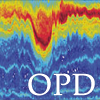|
Tongxin (Joyce) Cai Research Assistant joycecai@uw.edu |
Education
B.S. Marine Science, Sun Yat-sen, 2019
M.S. Environmental Engineering, Stanford University, 2021
|
Publications |
2000-present and while at APL-UW |
Internal tide variability off central California: Multiple sources, seasonality, and eddying background Cai, T., Z. Zhao, E. D'Asaro, J. Wang, and L.-L. Fu, "Internal tide variability off central California: Multiple sources, seasonality, and eddying background," J. Geophys. Res., 129, doi:10.1029/2024JC020892, 2024. |
More Info |
8 Aug 2024 |
|||||||
|
Two moorings deployed for 75 days in 2019 and long-term satellite altimetry data reveal a spatially complex and temporally variable internal tidal field at the Surface Water and Ocean Topography (SWOT) Cal/Val site off central California due to the interference of multiple seasonally-variable sources. These two data sets offer complementary insights into the variability of internal tides in various time scales. The in situ measurements capture variations occurring from days to months, revealing ~45% coherent tides. The north mooring displays stronger mode-1 M2 with an amplitude of ~5.1 mm and exhibits distinct time-varying energy and modal partitioning compared to the south mooring, which is only 30-km away. The 27-year altimetry data unveils the mean and seasonal variations of internal tides. The results indicate that the complex internal tidal field is attributed to multiple sources and seasonality. Mode-1 tides primarily originate from the Mendocino Ridge and the 36.5–37.5°N California continental slope, while mode-2 tides are generated by local seamounts and Monterey Bay. Seasonality is evident for mode-1 waves from three directions. The highest variability of energy flux is found in the westward waves (±22%), while the lowest is in the southward waves (±13%). The large variability observed from the moorings cannot be solely explained by seasonality; additional factors like mesoscale eddies also play a role. This study emphasizes the importance of incorporating the seasonality and spatial variability of internal tides for the SWOT internal tidal correction, particularly in regions characterized by multiple tidal sources. |
|||||||||






